Where is the articular cartilage, and what does it do?
Articular cartilage covers the ends of bones. It has a smooth, slippery surface, which allows the bones of the knee joint to slide over each other without rubbing. This slick surface is designed to minimize pressure and friction as you move.
When the surface of the cartilage is injured, it is usually not painful at first. This is because cartilage tissues are not supplied with nerves. However, any holes or rough spots in the cartilage can throw off the intricate design of the joint. If this happens, the joint can become inflamed and painful. If the injury, or lesion, is large enough, the bone below the cartilage loses protection, and pressure and strain on this unprotected portion of the bone can also become a source of pain. Finally, if the cartilage injury isn't treated, it may eventually cause other problems in the joint.
Surgeons classify defects in the knee cartilage using a grading scale from I (one) to IV (four). In a grade I tear, the cartilage has a soft spot. Grade II lesions show minor tears in the surface of the cartilage. Grade III lesions have deep crevices. In grade IV lesions, the tear goes all the way to the underlying bone.
The following images show each type of defect

A grade IV lesion goes completely through of the cartilage. It is diagnosed as a full-thickness lesion. Sometimes part of the torn cartilage will break off inside the joint. Since it is no longer attached to the bone, it can begin to move around within the joint, causing even more damage to the surface of the cartilage. Some doctors refer to this unattached piece as a loose body.

Cartilage lacks a supply of blood or lymph vessels, which normally nourish other parts of the body. Without a direct supply of nourishment, cartilage is not able to heal itself if it gets injured. If the cartilage is torn all the way down to the bone, however, the blood supply from inside the bone is sometimes enough to start some healing inside the lesion. In cases like this, the body will form a scar in the area using a special type of cartilage called fibrocartilage. Fibrocartilage is a tough, dense, fibrous material that helps fill in the torn part of the cartilage. Yet it's not an ideal replacement for the smooth, glassy articular cartilage that normally covers the surface of the knee joint.
Related Document: One Wellness Guide to Knee Anatomy
Knee Anatomy Introduction



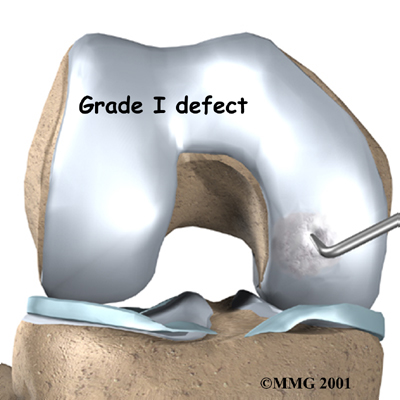
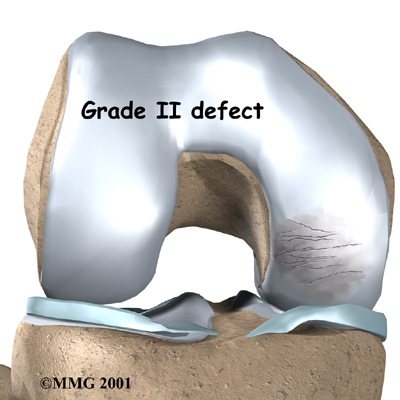



 Arthroscopic Debridement
Arthroscopic Debridement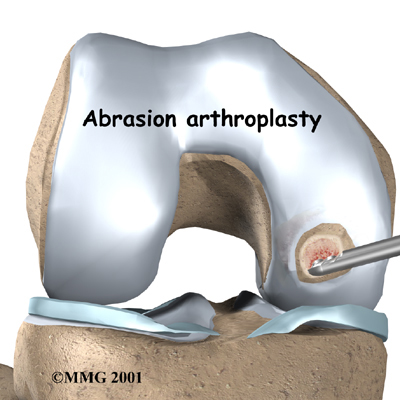

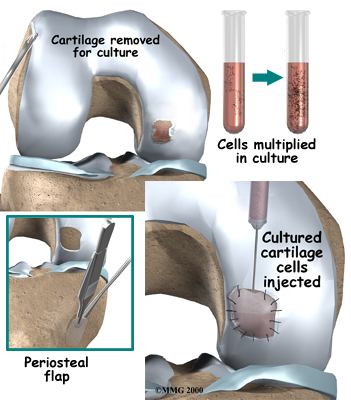
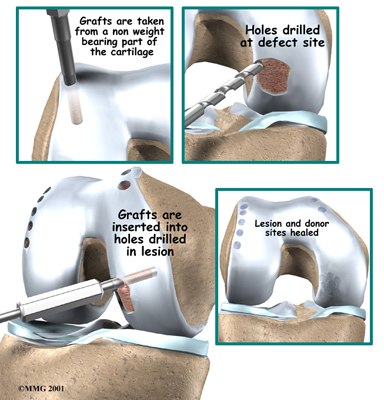 An autograft is a procedure for grafting tissue from the patient's own body. The place where the graft is taken is called the donor site. In this case, surgeons graft a small amount of bone (osteo) and cartilage (chondral) from the donor site to put into the lesion. Usually, the donor site for this procedure is on the joint surface of the injured knee. Surgeons are careful to take the graft from a spot that won't cause a lot of problems, usually on the top and outside border of the knee cartilage. Even then, people sometimes end up with problems around the donor site. The
An autograft is a procedure for grafting tissue from the patient's own body. The place where the graft is taken is called the donor site. In this case, surgeons graft a small amount of bone (osteo) and cartilage (chondral) from the donor site to put into the lesion. Usually, the donor site for this procedure is on the joint surface of the injured knee. Surgeons are careful to take the graft from a spot that won't cause a lot of problems, usually on the top and outside border of the knee cartilage. Even then, people sometimes end up with problems around the donor site. The 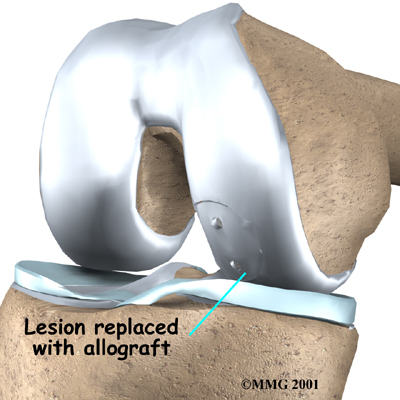


 (403) 679-7179
(403) 679-7179  concierge@one-wellness.ca
concierge@one-wellness.ca 

